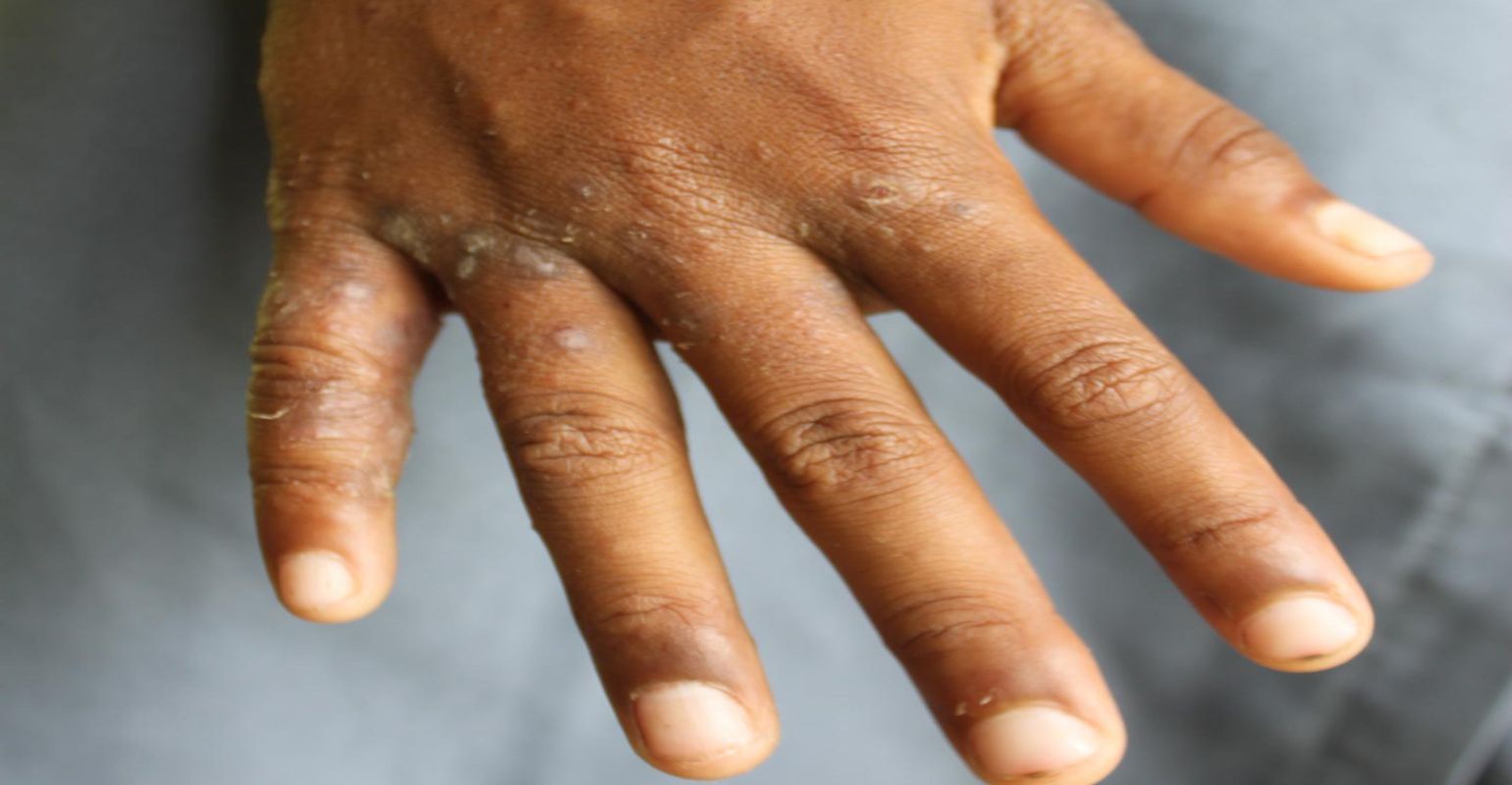Delving into the Scabies Outbreak Within an Inpatient Rehabilitation Setting
An outbreak investigation in the American Journal of Infection Control reviews the infection control procedures implemented by an academic medical center in response to a patient's introduction of scabies to health care workers.
Scabies
(Adobe Stock, unknown)

A recent American Journal of Infection Control article described how a scabies outbreak transpired at a medical center in Western Pennsylvania and how the situation was rectified.
“Scabies is a skin infection caused by the ectoparasite Sarcoptes scabiei var. hominis. It is transmitted by close person-to-person contact, which makes it easy to spread in household members and between sexual partners,” according to the study. "Ordinary scabies usually has a small number of mites (10-15), while crusted scabies can present with up to two million mites which makes it more contagious. Besides skin-to-skin contact, crusted scabies can also be transmitted by indirect ways such as shedding mites [from] contaminated clothing, bedding, and furniture. People who are immunocompromised, old, and debilitated are more easily to acquire crusted scabies. Typical symptoms include skin lesions such as papules, burrows, and rash. It can also cause severe pruritus.”
The academic medical center has 435 beds. Of those, the facility has 76 inpatient rehabilitation beds, including specialized units for spinal cord injury, stroke, brain injury, and general rehabilitation. The initial patient involved in the case had been incarcerated and transferred to the inpatient rehabilitation facility for physical therapy on February 25, 2022. Initially, the patient displayed a mild rash, which later progressed, raising suspicions of a mild allergic response to oxacillin.
Dermatology was consulted via Tele-Derm service for the patient's case, leading to the prescription of 20 mg prednisone twice daily to alleviate the rash. Surprisingly, the patient's condition worsened within a span of 2 days of commencing steroid treatment, resulting in the development of crusts on the rash. Concurrently, several health care workers (HCWs) reported encountering rash and experiencing itching symptoms. A dermatology assessment conducted on March 14, 2022, confirmed the presence of scabies in a physical therapist following a skin scraping procedure. Immediate notification was provided to the physical therapist's student, who was subsequently diagnosed with scabies and received appropriate treatment.
The initial patient had been treated for scabies in prison, and the county health department had verified several scabies cases, but none of the HCWs or guards were notified.
Infection Control received a notification regarding a potential spread of scabies within the rehabilitation unit. Infection Control proceeded with a skin biopsy on March 22, 2022, and sent it for dermatopathology evaluation. The biopsy results were still pending, so a skin scraping was performed the next day. Both the skin biopsy and the skin scraping confirmed the presence of scabies. The patient's condition transitioned to crusted scabies due to the combined effects of stress and steroid treatment. This patient was identified as the index patient in this outbreak investigation and had exposed 46 HCWs. Following identifying scabies in the index patient, the patient was placed on contact precautions.
Symptoms initially manifested in the first suspected HCW on March 21, 2022, and the final case was observed on April 13, 2022. Out of the 46 HCWs exposed, 29 HCWs exhibited lesions and itching, treatment protocols involving ivermectin and permethrin or solely ivermectin were administered. Among them, 7 HCWs received both treatments, while only 3 required retreatments after a week. None of these 29 HCWs tested positive for scabies through skin scraping.
Scabies is a contagious skin infestation caused by the Sarcoptes scabiei mite. The most common way scabies is transmitted is through prolonged skin-to-skin contact, such as holding hands, hugging, or sexual contact. The mites can also spread indirectly through sharing infested clothing, bedding, or towels. Scabies commonly affects areas such as the wrists, elbows, armpits, genitals, and between the fingers. Treatment typically involves prescription creams or lotions that kill the mites and their eggs. According to the CDC, patients with scabies should be placed under contact precautions until 24 hours after commencing effective treatment.
Control measures for scabies in health care facilities include implementing appropriate infection control measures while interacting with patients (eg avoiding direct skin-to-skin contact, practicing thorough handwashing), ensuring accurate diagnosis of scabies, promptly initiating comprehensive treatment and follow-up for affected individuals, and administering preventive treatment to staff and other patients who have had prolonged skin-to-skin contact with suspected or confirmed cases. The health department and any other impacted institution, such as a hospital or long-term care facility, should be notified immediately regarding a scabies outbreak.
Read the entire study here.